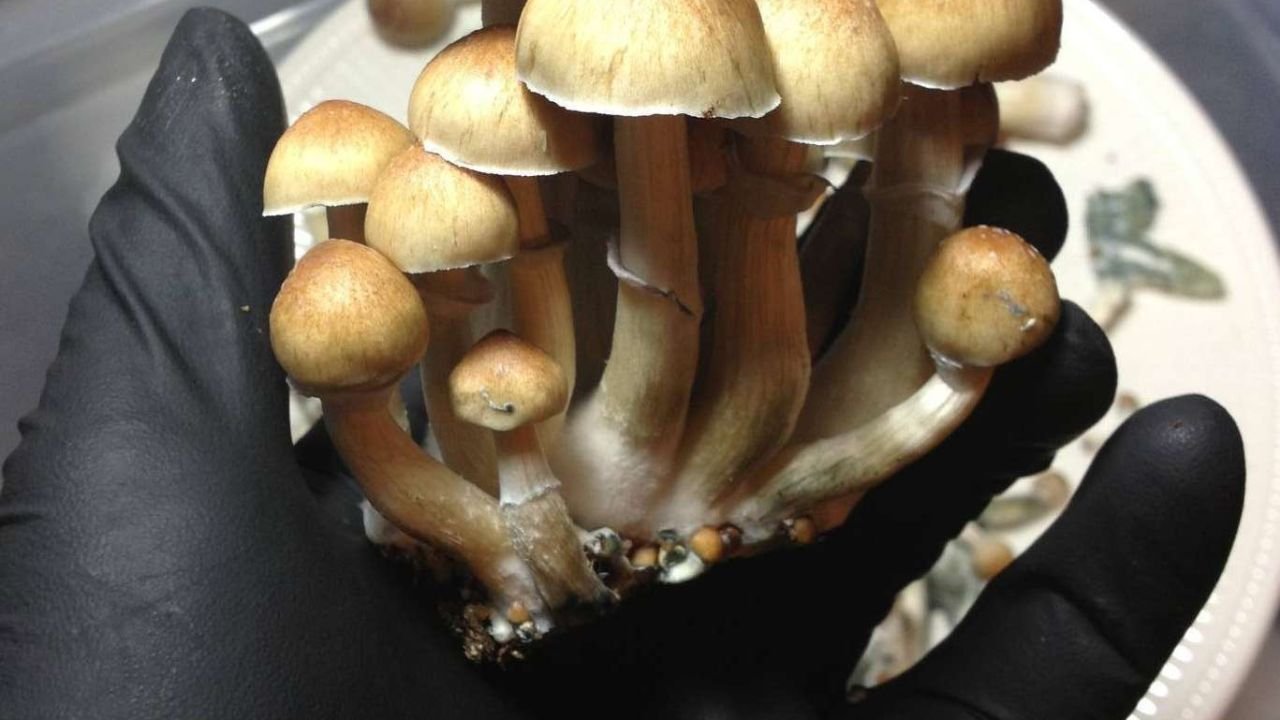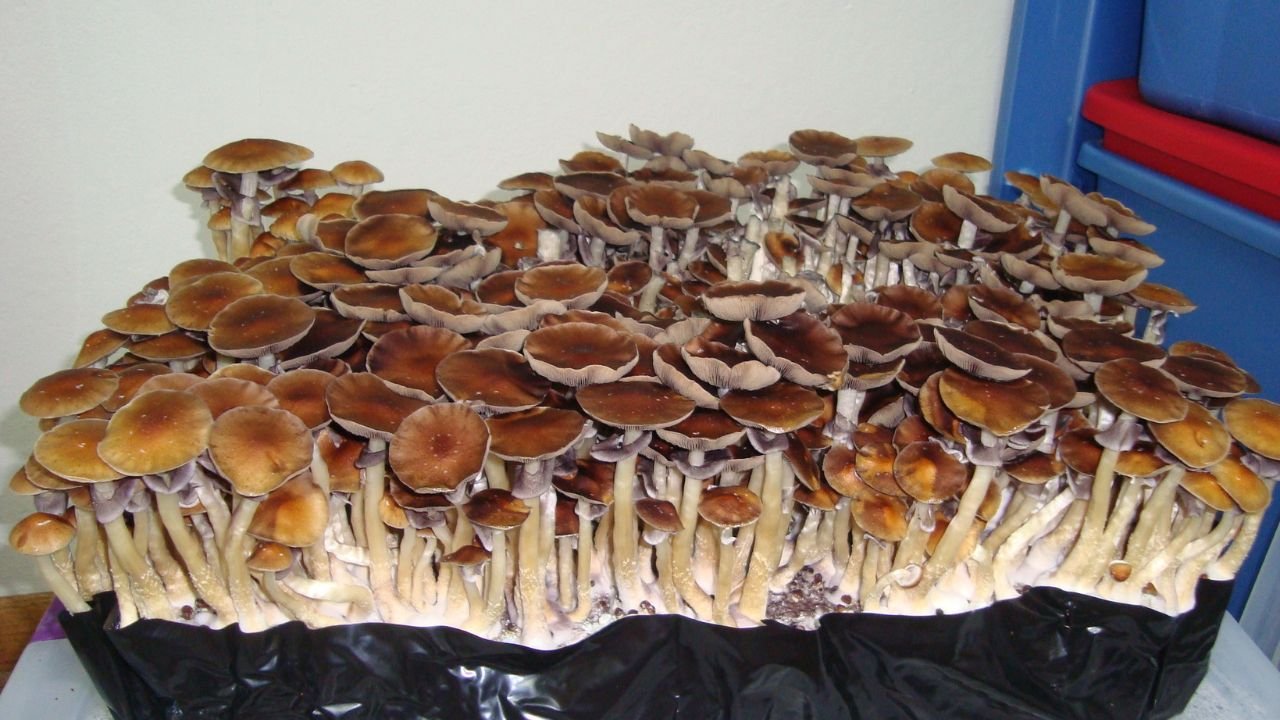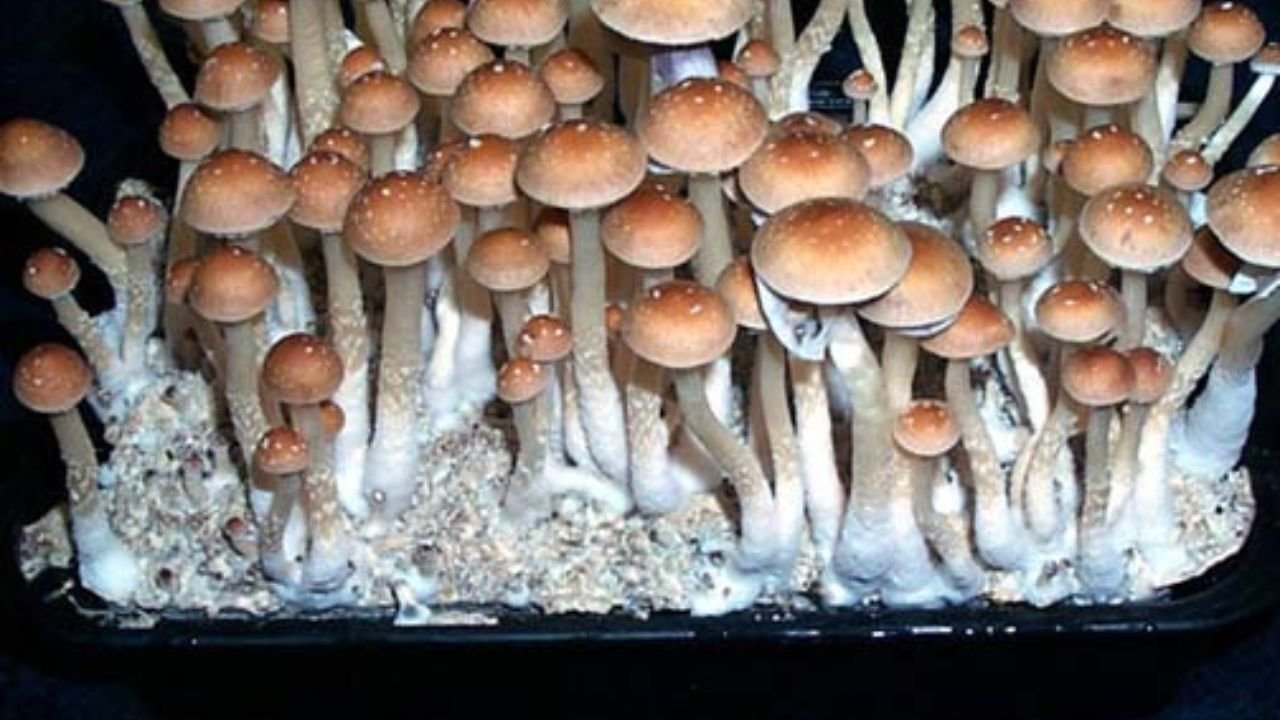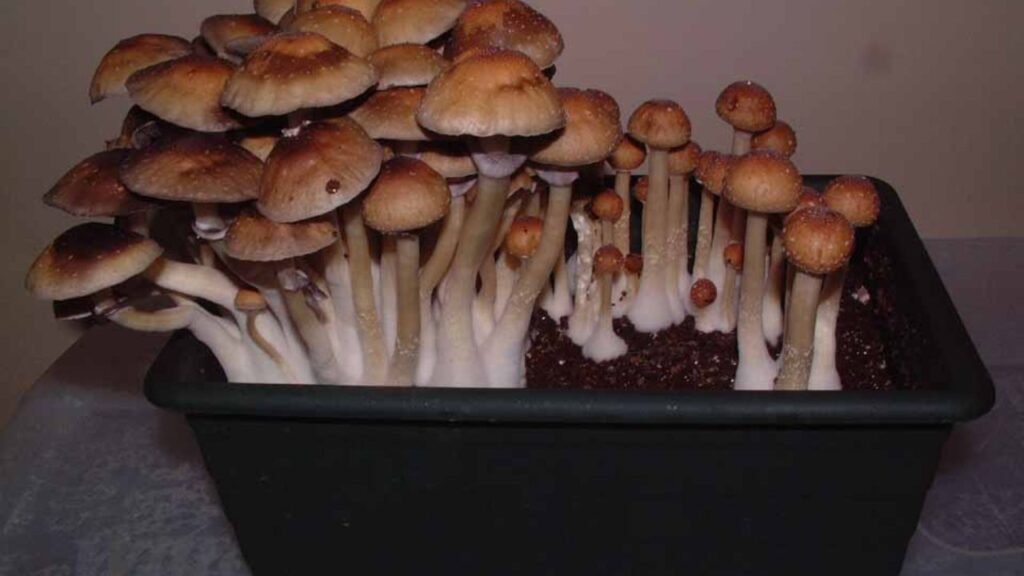Magic Mushroom
Monotubs Shroomery: A Comprehensive Guide
A “monotub” shroomery is a popular and efficient method for cultivating psychedelic mushrooms, particularly species like Psilocybe cubensis. Many mushroom enthusiasts favor this method due to its simplicity, cost-effectiveness, and high yield potential.
In Monotubs shroomery comprehensive guide, we will explore the concept of monotube chronometry in detail, covering everything from the equipment you’ll need to the step-by-step process of setting up and maintaining your monotube for mushroom best monotub tek shroomery cultivation.
What is a Monotub Shroomery?
A monotube shroomery is a specific method of cultivating psychedelic mushrooms, such as Psilocybe cubensis, using a monotube as the primary growing container. This technique has gained popularity for its efficiency, simplicity, and ability to produce significant yields of psilocybin-containing mushrooms. Monotubs are essentially plastic containers or tubs equipped with a lid, designed for use in the 35l monotub colonization and fruiting stages of mushroom shoebox tek cultivation.
Benefits of Using a Monotube Shroomery

Monotube Shroomery is a highly efficient and popular method for cultivating mushrooms, particularly species like Psilocybe cubensis. This innovative cultivation system offers several benefits to mushroom enthusiasts. Firstly, it provides a controlled and sterile environment for mushroom growth, minimizing contamination risks. Its simplicity and low-cost materials make monotubs shroomery accessible to beginners and experienced growers alike.
Monotubs also maximize yield potential, producing abundant harvests in a compact space. Their self-contained design ensures minimal maintenance and a streamlined cultivation process. Furthermore, Monotub Shroomeries are easily scalable, allowing growers to adapt to their specific best monotub tek shroomery needs. Overall, using a Monotube Shroomery enhances the success and productivity of mushroom cultivation, making 35l monotub a preferred choice for many mycologists.
Precautions and Legal Considerations
Precautions and Legal Considerations” is a crucial aspect of any undertaking that involves adherence to regulations, standards, and ethical guidelines. It entails a comprehensive evaluation of potential risks, hazards, and obligations in order to safeguard individuals, organizations, and the broader community. These precautions encompass measures that mitigate physical, financial, and reputational harm, covering a wide array of domains such as healthcare, business operations, and personal safety.
Legal considerations involve understanding and complying with local, national, and international laws, including contracts, intellectual property rights, and liability. Both precautions and legal considerations play an indispensable role in maintaining integrity, upholding ethical principles, and ensuring compliance with the established rules and regulations.
Choosing the Right Container

Choosing the right container is a crucial decision that can make a significant difference in various aspects of daily life. Whether monotube shroomery for food storage, transportation, or organization, the right container should align with your specific needs. Size, material, and design all play pivotal roles in monotube shroomery selection process. A well-chosen container can keep your food fresh, protect valuable items, and optimize space in your home or workplace.
It’s mono tubs shroomery kit about finding the perfect balance between functionality, durability, and aesthetics. The correct container makes life easier, increases productivity, and brings a little structure into your everyday activities. Thus, in order to choose the finest container, take your demands and tastes into account.
Substrate and Spawning Material
I material are integral components in various biological and environmental processes. Substrate, on the other hand, refers to the physical surface or material upon which organisms or processes interact, serving as a foundation for growth, attachment, or support. In ecology, monotube chronometry can be the soil in which plants grow or the habitat in which microorganisms thrive. In the context of mushroom cultivation, a substrate is the medium where mycelium colonizes and produces fruiting monotub grow shroomery bodies.
Spawning material, on the other hand, plays a vital role in the reproduction of certain organisms, especially in aquaculture and mycology. It serves as a conducive environment for the deposition and incubation of eggs or spores, facilitating the early stages of development for various species. Both substrate and spawning material are essential in understanding and managing ecosystems, agriculture, and monotubs shroomery kit the cultivation of diverse organisms.
Colonization and Fruiting Chambers
Colonization and fruiting chambers are integral components in the cultivation of mushrooms and other fungi. Furthermore, these specialized chambers play a crucial role in the controlled growth and development of mycelium and the subsequent production of fruiting bodies.The colonization chamber provides the ideal conditions for mycelial expansion, maintaining precise temperature, humidity, and air quality to encourage rapid growth.
Once the mycelium has thoroughly colonized the substrate, the process transitions to the fruiting chamber, where environmental conditions are adjusted to stimulate the formation of mushrooms. Humidity, temperature, and light levels are carefully managed in the fruiting chamber to optimize the yield and quality of the final fungal harvest, making these chambers pivotal in the cultivation process. You’ll need separate chambers for the colonization and fruiting monotube shroomery stages:.
Hygiene and Sterilization Supplies
Hygiene and Sterilization Supplies encompass a wide range of essential products designed to maintain cleanliness and ensure safety in various settings. Additionally, these supplies are vital for promoting health and preventing the spread of infections. They include items like disinfectants, hand sanitizers, gloves, face masks, cleaning agents, sterilization equipment, and more.
Whether in healthcare facilities, food preparation areas, laboratories, or everyday life, these supplies play a critical role in upholding sanitation standards and minimizing the risk of contamination. They guarantee a hygienic and secure environment for people and the community as a whole, making them essential weapons in the never-ending fight against illnesses and infections.
Other Essential Tools and Materials
I materials are integral components in various biological and environmental processes. Substrate, on the other hand, refers to the physical surface or material upon which organisms or processes interact, serving as a foundation for growth, attachment, or support. In ecology, monotube chronometry can be the soil in which plants grow or the habitat in which microorganisms thrive.
These tools and materials facilitate precision, safety, and creativity in endeavors, ensuring efficient outcomes and high-quality results. By complementing primary tools and materials, they are the unsung heroes that enable the smooth and successful execution of tasks, embodying the essence of versatility and functionality in countless shroomery teks domains.
Selecting the Mushroom Species

Selecting the right mushroom species is a crucial decision for both culinary enthusiasts and foragers. This process involves careful consideration of factors such as appearance, habitat, and spore print color to ensure safe and enjoyable consumption. Mushroom hunters must meticulously examine the cap, gills, stem, and any distinguishing features to identify the species accurately.
For chefs, choosing the perfect mushroom can elevate a dish’s flavor profile. Whether modified monotub tek the earthy richness of shiitake, the delicate aroma of chanterelles, or the boldness of portobellos, the choice of mushroom species greatly influences the taste, texture, and overall experience of the final dish.
Common Psilocybe Species
Common Psilocybe species, often referred to as “magic mushrooms,” encompass a diverse group of psychoactive fungi found across the globe. These mushrooms are characterized by their small, brownish caps and slender stems. They contain the compound psilocybin, which induces altered states of consciousness when ingested, leading to vivid hallucinations and profound introspection.
Some well-known members of this genus include Psilocybe cubensis and Psilocybe semilanceata. These fungi have a rich history in traditional rituals and modern recreational use.
Legal Considerations
Legal Considerations” refers to the critical examination of laws, regulations, and statutes relevant to a particular situation or decision. It involves assessing the legal implications, potential liabilities, and compliance requirements that may affect individuals, businesses, or organizations.
Addressing legal considerations is crucial in ensuring that actions, contracts, and activities are in accordance with the law, protecting rights, and avoiding legal disputes or consequences. It monotubs shroomery an essential aspect of responsible decision-making and risk management in various legal contexts.
Equipment and Materials
Equipment and materials refer to the essential tools, devices, and substances used in various fields and industries. These items are indispensable for tasks ranging from construction and manufacturing to scientific research and everyday activities.
They encompass a wide range of physical resources, such as machinery, tools, chemicals, and raw materials, each tailored to specific purposes. Efficient selection, management, and utilization of equipment and materials are crucial for achieving desired outcomes across diverse professional and personal modified monotub tek endeavors.”
Conclusion
Monotubs and shroomeries are integral components of the cultivation process for psychedelic mushrooms like Psilocybe cubensis. The use of a monotube as a fruiting chamber within a carefully maintained shroomery provides a controlled environment conducive to successful mushroom growth.
Growers must adhere to established protocols, preserve aseptic conditions, and comprehend the legal ramifications linked to the production of hallucinogenic shroomery tubs mushrooms. Additionally, the responsible and ethical use of these substances is crucial, given their potential for altering consciousness and the associated legal and safety risks.
FAQ:
What is a Monotub in the Context of Shroomery?
A Monotube is a popular cultivation method used by mycology enthusiasts to grow various species of psychedelic mushrooms, most commonly Psilocybe cubensis. It involves using a plastic container (tub) with proper ventilation and substrate to cultivate mushrooms efficiently.
How does a Monotube work for Growing Mushrooms?
A Monotub creates a controlled environment for mushroom growth. It usually consists of a plastic storage tub with holes for air exchange, filled with a mixture of colonized spawn and a substrate (often a combination of coir, vermiculite, and other ingredients). Mushrooms grow from the substrate, and the holes in the tub provide necessary fresh air exchange and release excess humidity.
What are Some Common Challenges when Using a Monotub?
Common challenges include:
Cotamination (mold or bacteria).
Maintaining the right environmental conditions.
Ensuring proper sterilization of substrate and equipment.
It’s essential to follow sterile techniques to minimize contamination risk.
How Long Does it Take to See Mushrooms in a Monotub?
The timeline can vary, but it usually takes 1-2 weeks for the mycelium to colonize the substrate, and then you can expect to see mushrooms start to appear within 1-2 weeks after that, depending on the species and environmental conditions.
Can I Use Monotubs for Growing Other Types of Mushrooms Besides Psilocybe Cubensis?
Yes, Monotubs can be used to grow a variety of mushroom species, including edible and medicinal varieties. Adjust the substrate and environmental conditions to suit the specific requirements of the mushroom species you’re cultivating.

